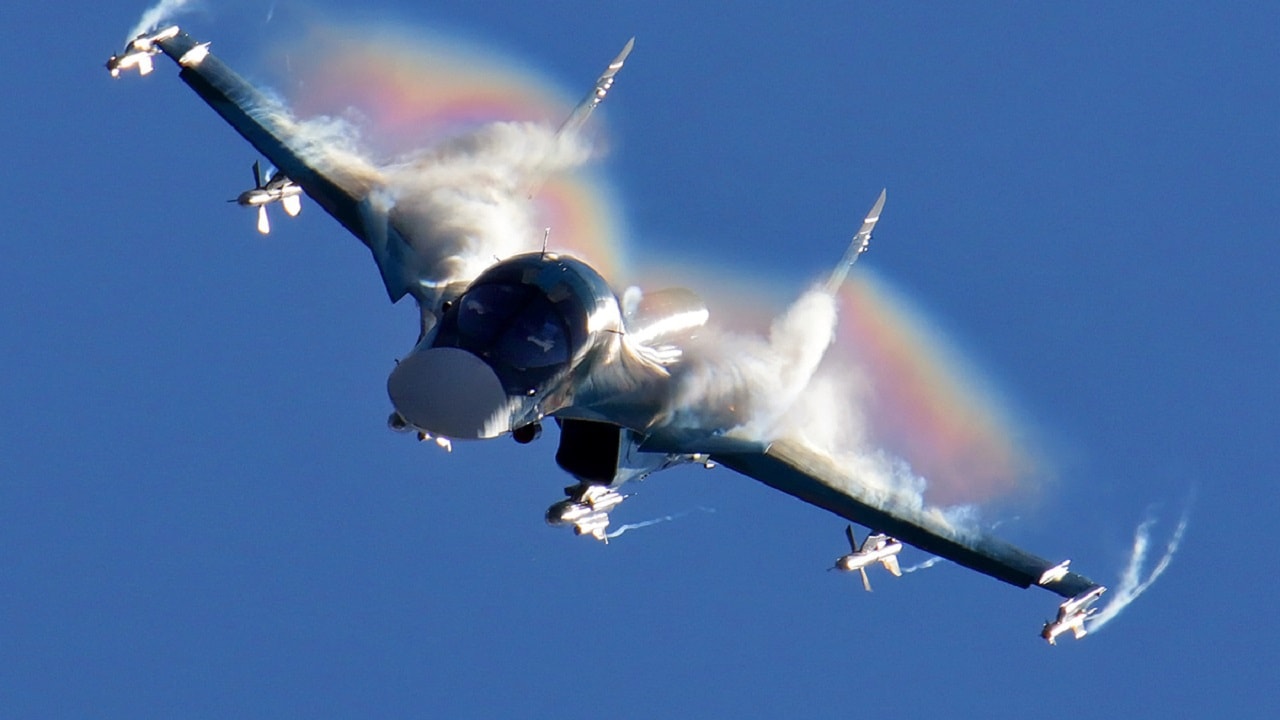The spokesman for the Air Force of the Armed Forces of Ukraine recently revealed that Russia had lost several of its top-of-the-line fighter platforms in the initial weeks of the invasion. In addition to Moscow’s Su-40, Su-30 and Su-35 jets, Ukrainian forces reportedly took down several helicopters.

Russian Su-34. Image Credit: Russian Military.
While incredible stories, including the time a civilian allegedly destroyed a Russian fighter with a rifle, highlight Ukraine’s fortitude in the conflict, the influx of Western weapons and equipment is the primary culprit for the downing of Russian airframes. Regardless of what has contributed to the airframe casualty losses Moscow has suffered, the numbers do not bode well for the Kremlin.
According to the Wall Street Journal, Moscow has likely lost around six-to-eight percent of its tactical combat aircraft, including roughly fifteen percent of its prewar platforms like multirole and ground-attack airframes.
A military specialist with the Institute for International and Strategic Studies told the Journal that “an estimated 20 Su-34 strike aircraft had been lost, along with one or two of the more-advanced Su-35.”
A more recent report from the top U.S. Air Force commander in Europe put these estimates much higher. Gen. James B. Hecker believes Moscow has probably lost more than 70 airframes since the invasion commenced last February.
Supply shortages have not helped Russia’s dwindling aerial stockpile
Similar to other Russian military equipment and armored vehicles, the Kremlin is having a difficult time replacing all the aircraft it has lost over the last fourteen months. Due to equipment shortages compounded by a lack of supply and funds, Moscow has been forced to rely on more antiquated Soviet-era weapons and airframes.
The Su-24, first adopted in the early 1970s, is a variable-sweep wing attack fighter that has a maximum speed of around 1,000 mph. This platform can sport over 17,000 pounds of ordnance, ranging from missiles to guided bombs.
How have Soviet-era platforms performed?
Another Soviet-era airframe Russia is utilizing in Ukraine is the Su-25. Developed by manufacturer Sukhoi, the ground-attack fighter was initially designed as a close-support airframe. Russian pilots flying the Su-25 at low altitudes in Ukraine have been more easily targeted by Ukrainian anti-aircraft weapons.
Since these fighters fly so low, they can be engaged by some of Ukraine’s shoulder-fired missiles. At least 16 Su-25s alone have been taken down over the last year and even more airframes have been damaged. Last month, Ukrainian forces said they destroyed an Su-25 and captured its pilot as “revenge” for Russian-launched airstrikes targeting an industrial plant days earlier.
When Moscow first invaded Ukraine last February, industry experts largely believed that Russia would easily be able to secure air supremacy. However, Russia’s failure to do so left its foot soldiers exposed to Ukraine’s small, dated yet adequate air force. In addition to the lackluster performance of its fighters, Russia’s air defense systems like the S-300 and S-400 have not lived up to expectations. Although these systems are formidable tools, Moscow’s previous claims surrounding their purported capabilities may have been a stretch.
MORE: Video – Ukraine Has Massive New NATO ‘Cannon’ Ready To Fight Russia
Maya Carlin, a Senior Editor for 19FortyFive, is an analyst with the Center for Security Policy and a former Anna Sobol Levy Fellow at IDC Herzliya in Israel. She has by-lines in many publications, including The National Interest, Jerusalem Post, and Times of Israel. You can follow her on Twitter: @MayaCarlin.

